#west asian cuisine
Text
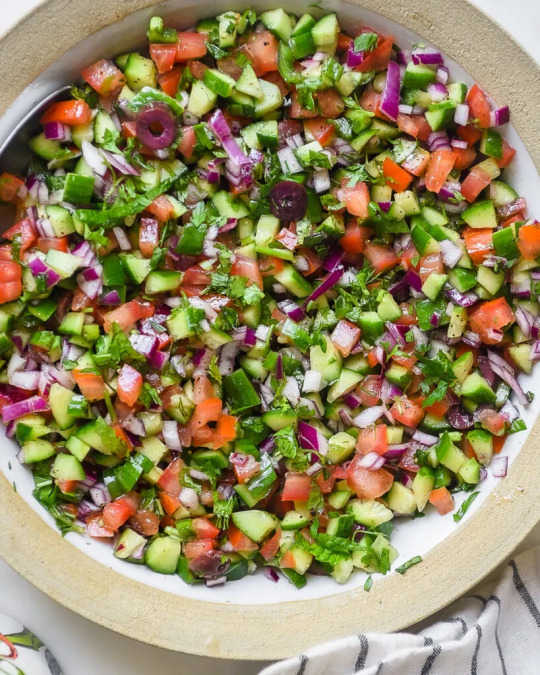

Persian Shirazi Salad (Vegan)
#vegan#appetizer#Persian cuisine#middle eastern cuisine#west asian cuisine#salad#dill#tomatoes#cucumber#red onion#bell peppers#mint#parsley#cilantro#sumac#lemon#olive oil#black pepper#sea salt#eat the rainbow
75 notes
·
View notes
Text


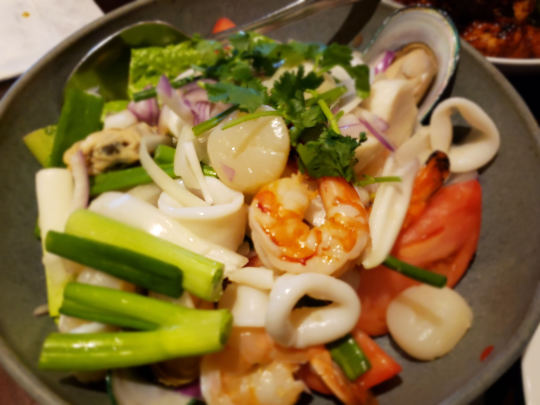

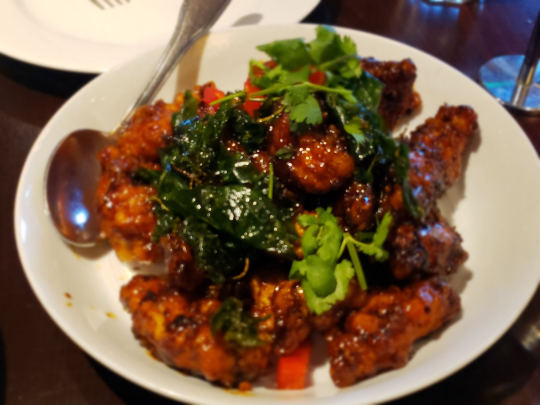
West Seattle Thai
Buddha Ruska is good food at a good price squeezed into a small space that is highly regarded by the locals - for good reason. Good textures, flavors, and aromas. We enjoyed it all.
#buddha ruska#thai#food#cuisine#asian#fusion#954food#the other pages#theotherpages.org#seattle#washington#west seattle#seafood#curry#fried rice
3 notes
·
View notes
Text
youtube
Watch the American Climate Leadership Awards 2024 now: https://youtu.be/bWiW4Rp8vF0?feature=shared
The American Climate Leadership Awards 2024 broadcast recording is now available on ecoAmerica's YouTube channel for viewers to be inspired by active climate leaders. Watch to find out which finalist received the $50,000 grand prize! Hosted by Vanessa Hauc and featuring Bill McKibben and Katharine Hayhoe!
#ACLA24#ACLA24Leaders#youtube#youtube video#climate leaders#climate solutions#climate action#climate and environment#climate#climate change#climate and health#climate blog#climate justice#climate news#weather and climate#environmental news#environment#environmental awareness#environment and health#environmental#environmental issues#environmental justice#environment protection#environmental health#Youtube
6K notes
·
View notes
Text
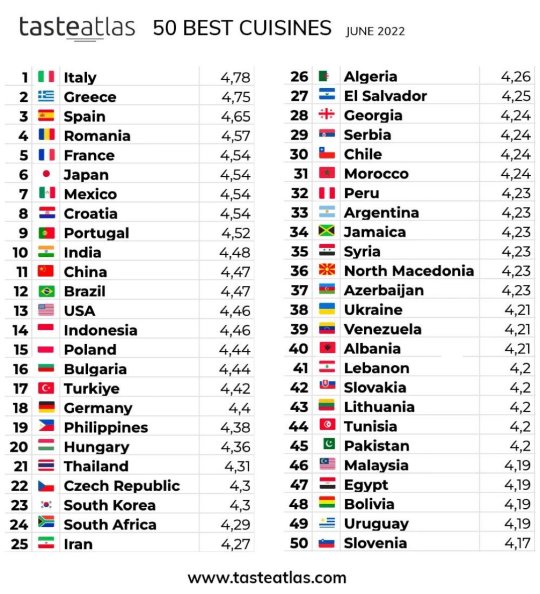
what the fuck is usamerican cuisine....
#latam middle eastern and (south) east asian cuisines high-key underappreciated as always#german cuisine is horrendous btw#where are west african cuisines????#just absolute bullshit yknow
5 notes
·
View notes
Text
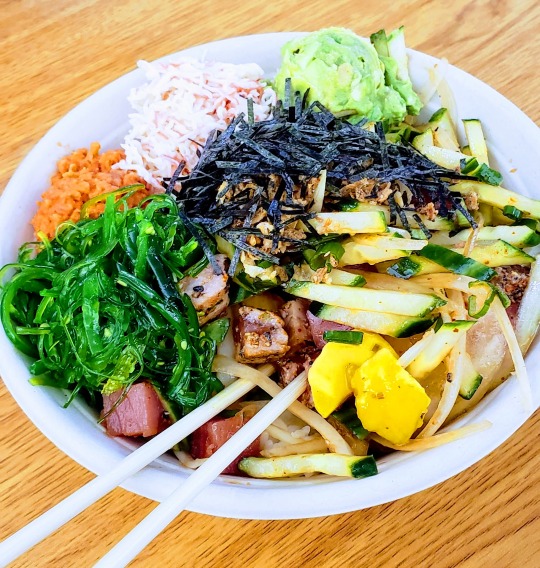
poke! yum! this is the perfect post Purdue game quick fix for feasting on extra tasty fresh fish, veggies, and classic hibachi big enough to split with a friend!
ohana poke || purdue university || january 16, 2023
#purdue university#purdue#campus life#food#poke#fish#restuarant#support local#local business#small business#tasty#yum#asian cuisine#fusion food#indiana#west lafayette#city life
1 note
·
View note
Note
Thoughts on Tulpas?
Really interesting concept, magically speaking.
Ever heard of French tacos? They're heavily inspired by north African cuisine, but for some damn reason, they're called tacos. They are not tacos. A taco is a single, small, corn tortilla, cooked directly on a grill, often topped with meat, specific sorts of melty Mexican cheese, raw or pickled onions, cilantro, salsa, lime juice, etc. They are small dishes, street food, where you are supposed to order two or three.
Whereas a French Taco is closer to a shwarma wrap made wih tortillas and cooked in a panini press. They are large, filling, affairs, stuffed with two types of meat, rich-as-fuck French cheeses, sauteed or grilled vegetables, and rich-as-fuck French sauces (including an east-asian inspired sesame based sauce called "samurai sauce").
They're damn good, but they are certainly not tacos.
Basically, in 1905, a theosophist named Annie Besant traveled to Tibet and studied with Vajrayana monks. She came back to the West talking about "Sprul-pa" and "nirmanakaya" and "emanation bodies" all of which are fascinating theological concepts, but concepts that don't really work outside of specific branches of esoteric Buddhist theology. So, the idea of the "Tulpa" was interpreted through a specifically western esoteric lense, to fit theosophist western esoteric metaphysics.
They're damn cool, but they're certainly not an authentic Tibetan Buddhist concept. But that's okay. Mexican tacos are dope. French tacos are dope. Just don't mistake French tacos for Mexican tacos, and for the love of God don't consider French tacos to be "Authentic Mexican cuisine."
1K notes
·
View notes
Text
2K notes
·
View notes
Text
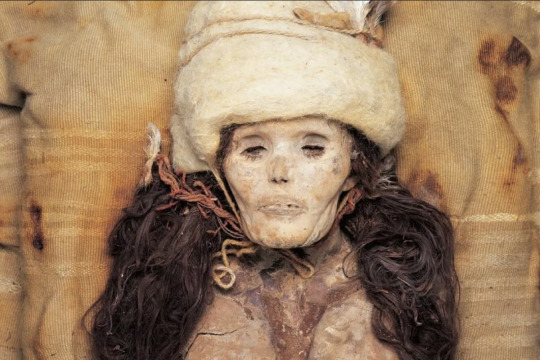
The Princess of Xiaohe (Chinese: 小河公主) or Little River Princess was found in 2003 at Xiaohe Cemetery in Lop Nur, Xinjiang. She is also known as M11 for the tomb she was found in. She was buried around 3,800 years ago. Furthermore, she was named the Princess of Xiaohe due to her state of preservation and beauty, not her social status; there is no reason to believe she was any more important than the other mummies buried in the complex.
The Princess has blonde hair and long eyelashes, with some facial features more similar to Indo-Europeans, such as high cheekbones and pale skin. She seems to be smiling slightly. She was 152 centimetres tall. Chunks of cheese were found on her neck and chest, possibly as food for the afterlife. Her body was not embalmed before death, but mummified naturally due to the climate and burial method.
“Despite being genetically isolated, the Bronze Age peoples of the Tarim Basin were remarkably culturally cosmopolitan – they built their cuisine around wheat and dairy from West Asia, millet from East Asia and medicinal plants like Ephedra from Central Asia,” said senior author Christina Warinner, an associate professor of anthropology at Harvard University.
The Tarim Basin mummies in what is now southern Xinjiang were once thought to be Indo-European-speaking migrants from the West. Some thought that their ancestors migrated from what became southern Siberia, northern Afghanistan or the Central Asian mountains.
“The identity of the earliest inhabitants of Xinjiang, in the heart of inner Asia, and the languages that they spoke have long been debated and remain contentious,” wrote the team of 34 researchers from China, Germany, South Korea and the United States in peer-reviewed journal Nature on Wednesday.
377 notes
·
View notes
Text
lmao no you guys cannot call the literal colonisers of south asia real south asians no matter how much you think chicken tikka masala is british cuisine now. go fuck yourselves upper caste migrants to the west do not represent south asia.
38 notes
·
View notes
Note
Hey! I'm not south asian, but I have been on a hyperfixation streak on desi culture and hinduism (it started off for an OC but escalated). One thing I've fallen in love with from afar is the cuisine. Particularly the immense variety of curries in Northen India.
It'd be funny to see a Jamil x desi!Reader scenario where the reader is just enjoying all the food he makes for them. Then when they get to the curry, they just shrug their shoulders and say "eh, you pass". Jamil, being the prideful man he is, immediatly challenges them to make something better. Cue reader absolutely smoking him with the most delicious pea curry he's ever tasted.

Hiya! It's honestly so heartwarming to see people who aren't south asian appreciating our culture and cuisine! <3333
I imagine Scarabia being having more West Asian/Arab characteristics in terms of culture even though Aladdin simply had a stereotypically orientalist vibe, I feel like a South Asian Yuu would probably get along best with the Scarabia gang for various reasons, but I imagine Jamil would be impressed with a South Asian Yuu's cooking skills, arab cuisine and South asian cuisine are both packed with flavors and seasoning so I'd imagine there'd be a bond over a love for food and culture.
Tbh I'd imagine South asian yuu would introduce a whole new pallete of taste to twisted wonderland, showing off all the different currys, samosas, uttapams, momos, etc from their world. I cam imagine them putting every one to shame (probably not Jamil tho lol) in the Master Chef event lol, they could probably try (and fail) to teach lilia a thing or two.
Might have to make another post talking abt the culture of Scarabia/Scalding Sands bc I could go on for days lol

#twisted wonderland#scarabia#Jamil viper#jamil viper x reader#desi!yuu#twisted wonderland x reader#twst x reader#・❥ Rambles over tea#might make some more south asian Yuu content as existing content is sparse </3
62 notes
·
View notes
Text

Persian Saffron Rice Pudding / Sholeh Zard (Vegan-Friendly)
#vegan#desserts#Persian cuisine#middle eastern cuisine#west asian cuisine#rice pudding#sholeh zard#saffron#rice#cardamom#rosewater#vegan butter#almonds#maple syrup#edible flowers#rose#💛
64 notes
·
View notes
Text
b’elanna’s banana pancakes
hello tumblr. it’s been a while since i did some star trek meta. but i’ve just been on a prodigy kick lately and that inevitably brings me back to voyager where i’ve spent some time before unpacking a lot of writing decisions and politics surrounding them. today i want to talk about the most inane detail i could fixate on in b’elanna’s characterization, and this thought hasn’t left me in years so i think maybe i should share it with the class. maybe it will mean something to someone else the way it does to me.
b’elanna’s favorite comfort food is banana pancakes. when she’s feeling down she asks neelix to replicate them for her, and it’s kind of a running staple in moments where b’elanna is feeling emotionally vulnerable. it’s a cute detail, but over the years i’ve turned the detail over and over and wished, pointlessly, that i could somehow go back in time and edit that writing decision and change b’elanna’s favorite pickup meal to something else: fried plantain. if you’re not familiar with latin american cuisine, plantain are a common staple in a lot of dishes but i am specifically to ripe plantain, fried until it’s golden brown and caramelized. it goes by different names depending on the country but it’s a surprisingly widespread dish. there’s even equivalents in west african and southeast asian countries and if you haven’t tried it this is the friendliest recommendation to taste the food of the gods before the end of your life.
i’ll admit the context for this obsession is selfish. i’m latin american, specifically costa rican, and when i watched voyager i couldn’t help but latch on to roxann dawson’s portrayal of a broken, abandoned young woman who learns to love herself and accept the love of others in her life when given the nurturing and patience she deserved all along. this wasn’t just because her character is beautiful in its own right, but because i identified with her as a latin american woman. i could spend a good amount of time talking about the standards of womanhood that i was subjected to growing up latin american but this post is not about that, so i’m going to summarize one of the things that makes b’elanna so important to me as a female latin american character very briefly: it’s her emotional complexity and the compassion with which all her emotions, including the anger and the trauma, are treated while portrayed as a latina character. i wish more than anything i had grown up watching voyager for this specific reason, and now that i’ve actually watched it i feel like a piece of my puzzle has been filled in, and i’m a little closer to whole. which is why it’s all the more curious that b’elanna isn’t exactly written as a latin american character in the first place.
star trek is a very american franchise, written by very american writers, and, with some notable exceptions, very white, cishet, male writers. it’s been talked to death how star trek’s vision of a multicultural world becomes seriously impaired by the lack of diversity in its leading creatives. today i specifically want to address how the franchise has been since its inception, and still is, limiting its potential by how the american cultural zeitgeist dominates its development. it’s a specifically white american zeitgeist, too. the human world regardless of the ethnicity of its members gets steamrolled into a very colorblind world where apparently humans now pride ourselves on our acceptance and embracing of different nations but we are only ever shown cultural expressions consistent with the experiences of modern day white americans. it’s even clearer in the writing of characters of color, like harry kim or geordi laforge, over white non americans like miles o’brien or malcolm reed. there have been exceptions, most notably in the writing of sisko’s family, but for the most part characters of color are not ever shown engaging in any activities that might have been passed down from non white american heritage. this is true even for characters who aren’t even supposed to be american, like uhura who’s meant to be from kenya. it’s not just a disappointment to the core values that the franchise is meant to stand by but also a waste of writing potential and even a loss in what could be a way to connect to potential fans from all over the globe.
back to me, because this post was made because of the very selfish reason that feel like i just need b’elanna to connect a little bit more to me. to my upbringing. i call it selfish because it’s not as clean cut a writing decision as it i make it out to be. latin americans, diaspora or otherwise, are not a monolith even in the 21st century. john torres and his family show again the limitations the writers run into with their limited worldview and they don’t seem to hold on to latin american traditions or cultural heritage. and furthermore, b’elanna herself has mixed feelings on her klingon heritage already but that doesn’t mean that the heritage passed down by the father who abandoned her would be that much easier to embrace. and yet in my mind i can just see little b’elanna eagerly devouring slices of fried plantain made by her father on rare occasions and feeling so utterly loved after being starved so many times of his affection because he shared something with her about himself and made her feel cherished with it. and that nostalgia for that tiny spark of love she felt so many years ago being fanned and set ablaze when her new family learns how to cheer her up with this little gesture that recognizes her roots.
it wouldn’t exactly be an uncomplicated portrayal, it’s not like i want my favorite dish to be equated with deadbeat dads and their shitty racist against klingons families. but i’m just reminded of jacob geller’s discussion on bj blazkowicz’s jewish heritage in the recent wolfenstein video game series. “i just want some recognition that he’s connected to me.” it would mean the world to me, too.
#if you reblogged my essay on seven of nine and the price paid for perfection you’re obligated to reblog this one as well#star trek#star trek voyager#voy#fandom#b’elanna torres#latin american representation#voyager
184 notes
·
View notes
Note
it’s my headcanon that mongolia may have once conquered china, but china knows that the way to a man’s heart is through his stomach.
so china begins cooking (let him cook)
and mongolia becomes addicted to chinese cuisine lmaooo (and mb even the cook himself)
Hahah interesting headcanon, I quite like it myself.
Historically, Yuan Dynasty court food was still mainly Mongol/Mongol influenced! Contrary to what some may believe, the Mongols of the Yuan were not sinicized, and this is seen even through the food they ate.
When the Mongols conquered China, they established their own court cuisine as a demonstration of power and authority. This aligns with the long-standing tradition across Chinese and other court societies of using food as a symbol of respect, dominance, hierarchy, and power.
It is reasonable to assume that the Mongols cuisine their pre-imperial ventures were similar to other central Asian trends .
Historical records mention feasts among Central Asian "barbarians" and their use of food in state ceremonies and hospitality. Rather than adopting China's classic cuisine, the Mongols built upon their own traditions, incorporating diverse international influences while also maintaining their steppe eating customs and foods.
This display of cultural preservation, despite the availability of Chinese alternatives, is seen as a testament to their determination!
Further, the Mongols established their capital in North China, which had already been under non-Chinese rule for over a century and had its own distinct cuisine. The Chinese food in the north was already influenced by Central and West Asia since the Han Dynasty.
Even before occupying China, the Mongols had vast imperial ventures and so they had opportunity to absorb culinary traditions from various regions.
Because or this, they didn't feel the need to adopt Chinese cuisine of the time, which was based on ingredients not readily available in the north. The Mongols were influenced by their Turkic officials and the cuisine they encountered in Beijing had already been influenced by previous dynasties.
Mongol feasts became increasingly diverse with the foods as the Mongols conquered more land, thus gaining access to more typed of foods.
The historian George Lane shares what a meal at the Mongol imperial court might have included:
"Appetizers might have included momo shapale with sipen mardur sauce, delicate steamed Tibetan mushroom ravioli smothered in a creamy, spicy yoghurt sauce. A salad of Bhutanese chilli and cheese might have followed. The main course, shabril with dresil, comprised Tibetan meatball curry with nutted saffron rice, honey, and currants. Himalayan steamed bread with turmeric and barley beer with honey would have accompanied the main food, and also as a dessert, Chinese chestnut mound with cream and glazed fruit would have found favour. "
The Yinshan Zhengyao is a 1330 CE book written by Hu Sihui, which served as a guide for the Mongol imperial court. It contains various recipes and cooking techniques. Some of the dishes include:
1) Roast Wolf Soup
2) Mountain oysters
3) Detoxifying Dried Orange Peel Puree (for hangovers)
While the Mongols definitely retained their cuisine (and culture), I do think Mongolia definitely did try traditional Chinese cuisine! There's no way he stayed there for (almost) a century and didn't try it.
He most likely then tried Song Dynasty food! The last Chinese dynasty to the South before the Yuan completely took over.
During the Song dynasty, Chinese cuisine reached new heights in terms of variety and nutritional value.
In fact, in 1998, the American "Life Magazine" listed the top 100 influential events of the past 1,000 years. One of them was the rise of restaurants and snacks during the Song Dynasty, which came at 56!
During the Song, people started eating three meals a day instead of two. This change gave them more time to explore and experiment with different cooking methods and flavours.
In Hangzhou, the capital of the Song Dynasty, cooks tried out a variety of herbs and spices brought from different parts of Asia. The noblemen hosted banquets that would last for days, serving dishes named "Dragon Meets Phoenix" and "Seven Stars Encircle the Moon." Hangzhou impressed Marco Polo so much that he described it as a place of abundant pleasures, akin to paradise!
Some song dynasty foods that China might have prepared for Mongolia (to prove this his cuisine is ~superior~)
1) Orange stuffed with fried crab

2) Plum blossom soup

Here's a website I found which talks more about Song Dynasty food:
The Song popularised foods that are even loved to this day like ham, braised pork, hotpot, fried bread stick, rice dumpling, and popcorn. It was a truly revolutionary period for food.
So I speculate that Mongolia tried Song Dynasty food, and yes, he was very impressed by it!
#hetalia#aph mongolia#hws mongolia#hws china#aph china#hetalia world stars#hetalia world series#hetalia world twinkle#Hetalia Mongolia#Hetalia China#Wang Yao#Yao wang#Monchu#Mongolia x China#China x Mongolia#Historical hetalia#Aph east Asia#Hws east Asia#Aph Asia#Hws Asia
37 notes
·
View notes
Note
How was life during the Byzantine empire and how different was with the rest of Medieval Europe?
I am afraid this could be the content of a proper book as it is very generic. I was trying to find something that could help me make a short enough post and I stumbled over this gem

My new gender is "effeminate person that speaks to statues" from now on although "Small Greek" (Graecula?) might be just as accurate
Yeah anyway the Byzantine Empire was the most advanced European and West Asian state of the Middle Ages from the 4th to the 11-12th centuries, as after that its collapse and the simultaneous fast rise of the West begin.
The Byzantine Empire had the largest and very diverse and rich cities, so beautiful that they attracted travellers from all over the known world just to see them (medieval tourists in short 😝). Constantinople more than any other, which chroniclers of the time sometimes described as “glowing with gold”. It was the center of the world's trade at its peak, it traded products between the East and the West.
It had universities and almost all people were getting at least some level of education, even if basic, including girls. It likely had the lowest percentage of women's illiteracy. Of course there was serious inequality by today’s standards but Byzantium was still one of the best places to live as a woman in the middle ages. Women had properties, ran their own businesses, could ask for divorce (in extreme circumstances) and could remarry but they were not obligated to. Women also participated in all festivities alongside men. There are also a few instances of women being influential and strong minded creators, like authors and poets (ie the aforementioned Anna Komnene, and not Komnenos as it says above, surnames here are gendered guys, stop turning all Greek women into dudes)
Byzantium preserved and studied extensively Classic philosophy, literature and science at a time these were still unknown to the west.
While Byzantium is perceived as an extreme Theocracy, in reality the Patriarch (the Orthodox equivalent of the Pope) was subordinate to the Emperor (unlike the Pope and the western kings) and therefore the emperor could oppose to the patriarch if his decisions were getting too much against the secular state's benefits. While the emperor was viewed as a saint on earth, this view was rather superficial and full of pretense. The commonwealth could get very easily restless and agitated when the emperor didn't meet their needs - this is why peasants and the army would often collaborate and overturn an emperor. Therefore, in the Byzantine Empire anyone could claim the throne no matter how humble his background was as long as he was skilled, intelligent, brave, popular and ruthless (or at least determined) enough. In general, even though there were social hierarchies, it was a place where you could rise in power, wealth, education and status despite your origins if you tried a lot or had a fair amount of cunning. Oh and the Byzantine Empire was the only medieval state to have been ruled by four women (a few of them ruthless indeed) without a man (or with a man being just a consort, I believe). But also, all empresses were expected to temporarily rule if their emperor husband was at war or sick, therefore they were always involved in the empire's affairs and their opinion mattered hugely both with the emperor and the court. Some empresses had very humble backgrounds as well and, you know, that’s kinda a big deal when it comes to medieval women. Even women could rise in power despite their background.
The Byzantine Empire liked festivities, showing off, luxuries, having fun - because, again, the commonwealth had to be satisfied. Peasants didn’t eat meat often, however there was a considerable diversity in the cuisine and also feasts where meat was offered for free to all.
There were also some technological feats (like some early robotlike devices), weapon innovations and medicine advancements like some pretty elaborate surgeries (including the first separation of conjoined twins - it would be attempted again 700 years later). The hospital as we know it today (trying to cure the patients) is a Byzantine invention as up to that point a hospital was just a place to accomodate dying people. The Byzantines took better care of their hygiene (there are records of Western Europeans being confused at how often Byzantine princesses wanted to take a bath).
About the worse stuff, the Byzantine Empire might have been one of the most invaded or threatened states in history, even by medieval standards. A war was experienced by every second generation on average! Invaders attacked from all sides. However, the cities had very strong walls, the Byzantine army was pretty strong (and hired good warriors from all Europe and Anatolia) and Byzantine diplomacy was also pretty advanced, often offering taxes and tolls to avoid conflicts. Such measures could rapidly impoverish the empire and the emperor had to impose huge taxes and then as said above the peasants would riot and the emperor would fall and the next one would either fight off the aspiring invaders or hide the financial issues until the next riot or happened to be a very competent ruler that led the empire to a new era of development and financial prosperity. This happened so many times that it made the empire a hilarious rollercoaster in terms of the economy. Nevertheless, it always kept the façade of luxury even at its worst. With that way or another (even if it might seem at times a not very proud way), the empire lasted and flourished longer than any other Medieval state until its pretty gruesome downfall.
Everything I mentioned above was better than the respective conditions in Western Europe in the Middle Ages. However, excuse any potential inaccuracies because it’s hard to shorten such a big topic and it might have some generalisations. I do believe what I wrote is pretty accurate though.
65 notes
·
View notes
Text
Spices in Chinese
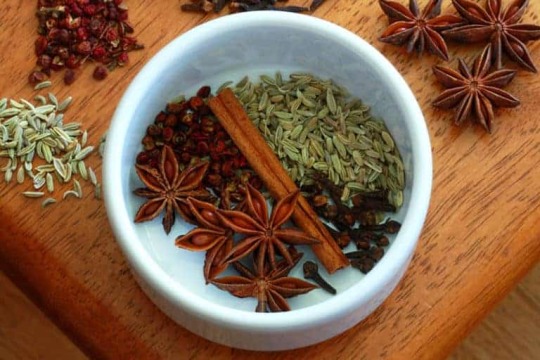
In my totally unbiased opinion, one of the best things about learning Chinese has been learning about Chinese food culture. Chinese food uses a dizzying array of spices, but these are the most common that you'll see in recipes. Learning these words might even help you find your way around your local Asian grocery store!
The Basics:
鹽 (yán): salt
糖 (táng): sugar
- Not technically spices, but salt and sugar are essential seasonings in Chinese cooking. Sugar is often used to provide balance in savory dishes, especially in the food of certain regions such as Shanghai.
味精 (wèijīng): MSG
-MSG is also a common ingredient (but not really a spice), and not associated with the same racist health panic as in the US. Some chefs, however, see it as "cheating" and prefer to impart umami through traditional ingredients like dried mushrooms and high-quality stock.
粉 (fěn)/面 (miàn): powder
- These two words can be stuck to the end of the spices below to indicate that they are ground instead of whole.
Spice Mixes:
五香粉 (wǔxiāngfěn): five-spice powder
- A sweet-and-savory spice mix well known around the world, five-spice powder tends to include star anise, Sichuan peppercorn, cinnamon, fennel and cloves.
咖哩粉 (gālífěn): curry powder
- British colonization brought curry to Hong Kong, where it's popular with beef or fish balls.
燒烤料 (shāokǎoliào): barbecue spice mix
- This doesn't refer to char siu, but to the spicy grilled meat skewers that are popular across China. A typical version hailing from the north-west is based on cumin and chili powder.
Spices:
胡椒 (hújiāo): pepper
- Chinese makes use of both white pepper (白胡椒) and black pepper (黑胡椒), but white pepper is more common.
花椒 (huājiāo): Sichuan peppercorn
- This is the spice that gives Sichuan food its famous numbing quality, though it is used all across China as well. It comes in red or green varieties, and can be used fresh or dried.
辣椒 (làjiāo): chili pepper
- Spicy food is popular in Sichuan and the rest of China's southwest, where tons of chili varieties are used fresh and dry-- this alone could be material for an entire vocab list.
八角 (bājiǎo): star anise
- One of the most iconic spices in Chinese cuisine, its name literally means "eight horns". It's commonly tossed into stews and braises.
肉桂 (ròuguì)/桂皮 (guìpí): cinnamon
- The cinnamon commonly used in Chinese cuisine is in fact cassia, which is stronger-flavored but less aromatic.
丁香 (dīngxiāng): clove
- A key ingredient in five-spice powder and occasionally tossed into braises. Interestingly, many of the sweet spices that we associate with desserts in the US are not commonly used as such in Asia. A friend once told me that many Taiwanese people don't like cinnamon desserts because they find the taste medicinal.
茴香 (huíxiāng): anise seed
- This spice is featured in Lu Xun's story Kong Yiji, where Kong Yiji asks the young narrator if he can write the character 茴, which is used in the name of the tavern's peas with anise.
香葉 (xiāngyè): bay leaf
- Bay leaves are used in China in much the same way as in the US-- tossed into stews and braises to provide a little... well, nobody knows what a bay leaf tastes like but it must be doing something.
陳皮 (chénpí): aged tangerine peel
- American-Chinese classics like orange chicken are likely influenced by stir-fries made with this bitter and fragrant peel.
百荳蔻 (báidòukòu): white cardamom
- Chinese food doesn't use the green cardamom commonly used in Indian food, instead preferring to use white cardamom in braised dishes.
草果 (cǎoguǒ): black cardamom, tsao-ko
- Black cardamom is dried over a fire, giving it a distinctive smoky flavor. While not overly common in much of China, it is one of the most common seasonings used in Yunnan food.
孜然 (zīrán): cumin
- Cumin is also not a flavor commonly associated with China, but it's iconic of the food of China's northwest, such as Shaanxi and Xinjiang.
甘草 (gāncǎo): licorice root
沙姜 (shājiāng); sand ginger
當歸 (dāngguī): angelica root
- These three spices are all known for their uses in traditional Chinese medicine, but are also used in medicinal soups and larger spice mixes. There are, of course, way more TCM herbs and spices used in Chinese cooking, but these are the most common to see in recipes or dishes.
#chinese#mandarin chinese#langblr#studyblr#vocab lists#zbtg posts#food#can u guys tell how much i love food and cooking and spices#i'll probably make more lists like this in the future#definitely one for sauces#and maybe vegetables or fruits#or different types of tofu... or noodles...#it also might be fun to do vocab lists for japanese/korean/vietnamese foods#all pretty popular in taiwan at least so i could just google maps some restaurants from where i used to live and go to town
169 notes
·
View notes
Text
September 25, 2023
One thing that Black people know how to do is cook. Over the years, the look of the culinary industry has drastically changed. From the traditional eating standards to Instagram chefs, the chefs in the aprons share one thing in common: being the best at what they do. For National Cooking Day on Sept. 25, Black Enterprise highlights five chefs killing the game in their respective lanes.
According to National Today, National Cooking Day was set up to encourage and inspire food lovers to try something new and explore the true beauty of the kitchen. From finger-licking good barbecue to fine-dining sous chefs, these five culinary artists have created a lane of their own.
Rodney Scott – South Carolina
Scott is known to make your mouth water with his traditional barbecue recipes and is often referred to as one of the U.S.’s master pit masters; the chef and business owner has made his mark as one of the industry’s favorites. His popular restaurant, Rodney Scott’s Whole Hog BBQ, is a staple in the Charleston community, serving fried chicken, pit-cooked chicken, mac and cheese, and, oh yeah, whole pigs.
He gives his feedback to those coming up behind him as a judge on Food Network’s BBQ Brawl.
Ayo Adeyemi – London
Chef Adeyemi has brought West Africa to the U.K. As head chef of London’s Michelin-star restaurant, Akoko, Adeyemi has changed how traditional African food is celebrated.
“When I was growing up in the industry as a young chef, restaurants like this weren’t around,” Adeyemi said, according to SCMP. “So I was forced to have to learn the modern British culture, the modern Asian culture, the modern French culture.”
Under the chef’s leadership, the menu now hosts an interesting take on jollof rice, served with BBQ, native blue lobster, and smoked goat with mustard seeds.
Nyesha Arrington – California
Her multiracial upbringing has made her keen sense of taste a powerful force in the industry. Arrington, who grew up with a Korean and Black background, trained with top cooks to pick up a spatula and has served as the head chef at Wilshire in Santa Monica, California. Arrington prides herself on concurring many food lanes, including “that path of France and nouvelle cuisine,” she told The New York Times, but she says the main thing she loves is finding the common denominator in food.
While she has made appearances in the Los Angeles Times and GQ, she currently stars as a judge on the cooking competition show Next Level Chef.
Jerrelle Guy – Florida
If you have a sweet tooth, make sure you’re following Jerrelle Guy. Her mouth-watering treats come with a unique spin, ranging from black bean brownies to brown sugar strawberry jalapeno lime pie. Her different recipes have given her a reputation to be proud of, catching the eye of fellow Black girl chefs like Carla Hall, and she was even nominated for a prestigious James Beard Award.
The cookbook author has also been featured on the Netflix series High on the Hog.
Chef Resha – YouTube
If you’re looking for simple but fulfilling recipes, tap into Chef Resha’s delicious YouTube page. So many chefs used the pandemic to uplift their craft, and Resha is one of several that wears the crown. Check out her steak and cheese stuffed peppers or bacon cheeseburger egg rolls recipe and tell her BE sent you.
#Celebrate National Cooking Day With These 5 Black Chefs Who Have Changed The Way We Eat#Black Chefs#cooking
8 notes
·
View notes